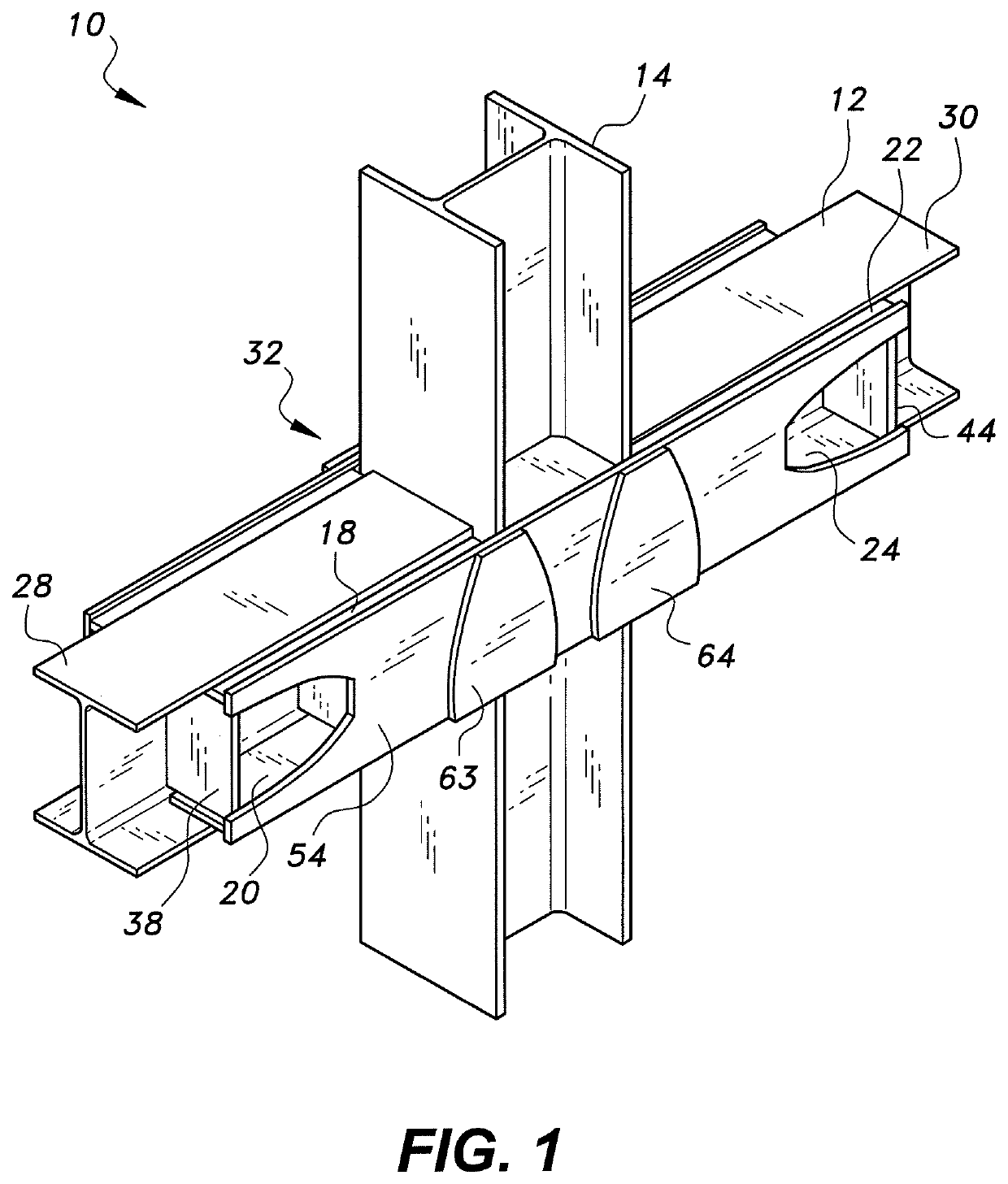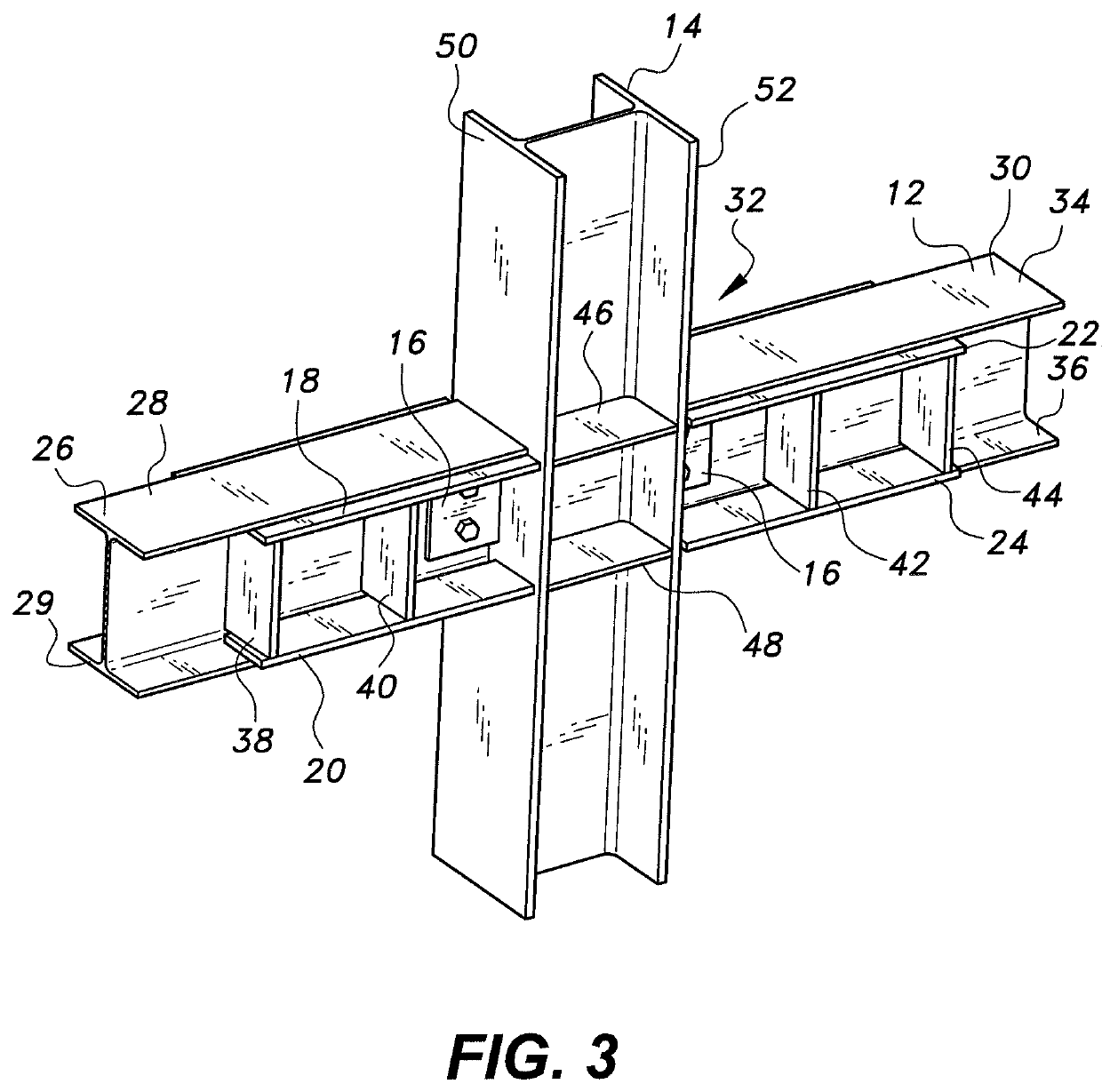Reinforced joint for beam-column connection
a technology of reinforced joints and beam columns, applied in the direction of building types, constructions, building constructions, etc., can solve the problems of steel buildings that are still susceptible to progressive collapse under extreme conditions, steel buildings are often exposed to extreme load events, and the entire building or at least large parts of the building collapse, etc., to improve the resistance of steel-framed buildings
- Summary
- Abstract
- Description
- Claims
- Application Information
AI Technical Summary
Benefits of technology
Problems solved by technology
Method used
Image
Examples
Embodiment Construction
[0025]Referring to FIGS. 1-3, a reinforced joint for beam-column connection 10 is provided for improving the resistance of steel-framed buildings against progressive collapse, such as may be caused by damage to one or more columns as the result of exposure to blast loads or other extreme loads. In FIGS. 1-3, the reinforced joint for a beam-column connection 10 is used as an internal joint in the building frame. As shown, first upper and lower flange stiffening plates 18, 20 are attached to inner faces of upper and lower flanges 26, 29, respectively, of a first structural beam 28 of a set 12 of structural beams. The first upper and lower flange stiffening plates 18, 20 may be welded to the inner faces of the upper and lower flanges 26, 29 of the first structural beam 28. The set 12 of structural beams also includes a second structural beam 30. Second upper and lower flange stiffening plates 22, 24 are attached to inner faces of upper and lower flanges 34, 36, respectively, of the sec...
PUM
 Login to View More
Login to View More Abstract
Description
Claims
Application Information
 Login to View More
Login to View More - R&D
- Intellectual Property
- Life Sciences
- Materials
- Tech Scout
- Unparalleled Data Quality
- Higher Quality Content
- 60% Fewer Hallucinations
Browse by: Latest US Patents, China's latest patents, Technical Efficacy Thesaurus, Application Domain, Technology Topic, Popular Technical Reports.
© 2025 PatSnap. All rights reserved.Legal|Privacy policy|Modern Slavery Act Transparency Statement|Sitemap|About US| Contact US: help@patsnap.com



